IMG Stageline ECMS-50 Handleiding
IMG Stageline
Microfoon
ECMS-50
Bekijk gratis de handleiding van IMG Stageline ECMS-50 (4 pagina’s), behorend tot de categorie Microfoon. Deze gids werd als nuttig beoordeeld door 146 mensen en kreeg gemiddeld 4.3 sterren uit 73.5 reviews. Heb je een vraag over IMG Stageline ECMS-50 of wil je andere gebruikers van dit product iets vragen? Stel een vraag
Pagina 1/4

ELECTRONICS FOR SPECIALISTS ELECTRONICS FOR SPECIALISTS ELECTRONICS FOR SPECIALISTS ELECTRONICS FOR SPECIALISTS ELECTRONICS FOR SPECIALISTS ELECTRONICS FOR SPECIALISTS ELECTRONICS FOR
ECMS-50 USB
Bestell-Nr. • Order No. 23.6940
MONACOR INTERNATIONAL GmbH & Co. KG • Zum Falsch 36 • 28307 Bremen • Germany Copyright© by MONACOR INTERNATIONAL. All rights reserved. A-1874.99.01.10.2017
➂ Frequenzgang • Frequency response
➁
Polardiagramm • Polar pattern
5020 100 200 500 1k 2k 5k 10k 20k(Hz)
−60
−20
−30
−40
−50
(dB)
30°
330°
300° 60°
90°
120°
270°
240°
210° 180° 150°
0°
➀
Vorderseite • Front USB Condenser Microphone
with Large Diaphragm
These instructions are intended for users
with basic knowledge in audio technol-
ogy. Please read the instructions carefully
prior to operation and keep them for
later reference.
1 Applications
This USB condenser microphone with large
diaphragm (25.4 mm / 1”) is designed for re-
cording instruments or voices / vocals directly
on the computer. It is ideally suited for studio
applications and home recording. For making
recordings, either use an audio software sup-
plied with the operating system (e. g. “Garage-
Band” from Apple Inc.) or install an additional
software (e. g. “Audacity”, available as free-
ware on the Internet).
The microphone is supplied with a shock
mount (spider), a 1.8 m USB cable and a
leather bag.
2 Important Notes
The microphone corresponds to all relevant
directives of the EU and is therefore marked
with .
•
The microphone is suitable for indoor use
only. Protect it against dripping water, splash
water and high air humidity. The admissible
ambient temperature range is 0 – 40 °C.
•
For cleaning only use a dry, soft cloth; never
use water or chemicals.
•
No guarantee claims for the microphone
and no liability for any resulting personal
damage or material damage will be ac-
cepted if the microphone is used for other
purposes than originally intended, if it is not
correctly connected, or if it is not repaired in
an expert way.
If the microphone is to be put out of
operation definitively, take it to a local
recycling plant for a disposal which is not
harmful to the environment.
3 Operation
1) Screw the microphone holder (spider) onto
a stand with 15.9 mm thread ( ”). Press 5/8
together the two wire clips to open the
clamp of the holder. Insert the microphone
into the holder; the clamp will secure the
microphone.
2) Loosen the screw on the joint of the holder.
Positon the microphone so that its front is
directed towards the sound source, then
fasten the screw.
3) Start the computer.
4) Use the cable provided to connect the
microphone to a USB port on the computer.
The internal blue LED of the microphone
will light up. The required drivers (standard
drivers of the operating system) will be in-
stalled automatically.
5) Call up the recording program used: Select
the microphone as input device for audio
recording and start recording.
In case of problems: Check the sound settings of the
operating system (Microphone not selected as input
device? Input level setting too low? Sound switched
off?) and readjust them, as required. It may be neces-
sary to restart the recording program or the computer.
6) After operation, disconnect the USB cable
of the microphone from the computer.
4 Specifications
Type / polar pattern: electret /cardioid . . .
Frequency range: . . . . . ☞ figure 3
Sensitivity: . . . . . . . . . . 25 mV/ Pa at 1 kHz
A / D converter:. . . . . . . 16 bits, 48 kHz max.
Max. SPL: . . . . . . . . . . 138 dB
S / N ratio: . . . . . . . . . . > 78 dB
Power supply: . . . . . . .
⎓
5 V via USB port
Dimensions, weight: . . . 50 mm × 185 mm, 250 g⌀
Connection at the
microphone: . . . . . . . . USB port, type B
Suitable operating systems:
Windows 2000 / XP / Vista / 7/ 8 / 10 or Mac OS X
Subject to technical modification.
Windows is a registered trademark of Microsoft Corporation in
the USA and other countries. Mac OS is a registered trademark of
AppleInc. in the USA and other countries.
USB-Großmembran-
Kondensatormikrofon
Diese Anleitung richtet sich an Benutzer
mit Grundkenntnissen in der Audio-
technik. Bitte lesen Sie die An leitung vor
dem Betrieb gründlich durch und heben
Sie sie für ein späteres Nachlesen auf.
1 Einsatzmöglichkeiten
Dieses USB-Kondensatormikrofon mit Groß-
membran (25,4 mm / 1”) ist für die Aufnahme
von Instrumenten oder Sprache /Gesang direkt
am Computer konzipiert. Es eignet sich damit
ideal für Studio- und Homerecording-Anwen-
dungen. Für die Aufnahme kann eine mit dem
Betriebssystem mitgelieferte Audio-Software
verwendet werden (z. B. „GarageBand“ von
Apple Inc.) oder eine zusätzlich installierte
(z. B. „Audacity“, als Freeware im Internet er-
hältlich).
Zum Lieferumfang gehören ein vibrations-
dämpfender Halter (Spinne), ein 1,8-m- USB-
Kabel sowie eine Ledertasche.
2 Wichtige Hinweise
Das Mikrofon entspricht allen relevanten
Richt linien der EU und trägt deshalb das
-Zeichen.
•
Das Mikrofon ist nur zur Verwendung im
Innenbereich geeignet. Schützen Sie es vor
Tropf- und Spritzwasser sowie vor hoher
Luftfeuchtigkeit. Der zulässige Einsatztem-
peraturbereich beträgt 0 – 40 °C.
•
Verwenden Sie zum Reinigen nur ein trocke-
nes, weiches Tuch, auf keinen Fall Chemika-
lien oder Wasser.
•
Wird das Mikrofon zweckentfremdet, falsch
angeschlossen oder nicht fachgerecht repa-
riert, kann keine Haftung für daraus resul-
tierende Sach- oder Personenschäden und
keine Garantie für das Mikrofon übernom-
men werden.
Soll das Mikrofon endgültig aus dem
Betrieb genommen werden, übergeben
Sie es zur umweltgerechten Entsorgung
einem örtlichen Recyclingbetrieb.
3 Inbetriebnahme
1) Den Mikrofonhalter (Spinne) auf ein Stativ
mit 15,9-mm-Gewinde ( ”) schrauben. Da-5/8
mit sich das Mikrofon in den Halter schie-
ben lässt, die beiden Drahtbügel am Halter
zusammendrücken.
2) Die Schraube am Gelenk des Halters lösen,
das Mikrofon so positionieren, dass die
Vorderseite auf die Schallquelle gerichtet ist
und die Schraube wieder festziehen.
3) Den Computer hochfahren.
4) Das Mikrofon über das beiliegende Kabel
mit einem USB-Port am Computer verbin-
den: Die interne blaue LED des Mikrofons
leuchtet. Die erforderlichen Treiber (Stan-
dardtreiber des Betriebssystems) werden
automatisch installiert.
5) Das verwendete Aufnahmeprogramm auf-
rufen, dort das Mikrofon als Eingabegerät
für die Tonaufnahme auswählen und die
Aufnahme durchführen.
Bei Problemen: Die Toneinstellungen des Betriebs-
systems überprüfen (Mikrofon nicht als Eingabegerät
ausgewählt? Eingabepegel zu niedrig eingestellt? Ton
ausgestellt?) und entsprechend korrigieren. Gegebe-
nenfalls das Aufnahmeprogramm bzw. den Computer
neu starten.
6) -Nach dem Betrieb das USB-Kabel des Mik
rofons vom Computer abziehen.
4 Technische Daten
Typ / Richtcharakteristik: Elektret / Niere
Frequenzbereich: . . . . . ☞ Abbildung 3
Empfindlichkeit: . . . . . . 25 mV/ Pa bei 1 kHz
A / D-Wandler: . . . . . . . 16 Bit, max. 48 kHz
Max. Schalldruck:. . . . . 138 dB
Signal -Rausch-Abstand: > 78 dB
Stromversorgung: . . . .
⎓
5 V über USB-Port
Maße, Gewicht: . . . . . . 50 mm × 185 mm, 250 g⌀
Anschluss am Mikrofon: USB-Buchse, Typ B
geeignete Betriebssysteme:
Windows 2000 / XP / Vista / 7/ 8 / 10 oder Mac OS X
Änderungen vorbehalten.
Windows ist ein registriertes Warenzeichen der Microsoft Corpora-
tion in den USA und anderen Ländern. MacOS ist ein registriertes
Warenzeichen von Apple Inc. in den USA und anderen Ländern.
Deutsch
English


ELECTRONICS FOR SPECIALISTS ELECTRONICS FOR SPECIALISTS ELECTRONICS FOR SPECIALISTS ELECTRONICS FOR SPECIALISTS ELECTRONICS FOR SPECIALISTS ELECTRONICS FOR SPECIALISTS ELECTRONICS FOR
MONACOR INTERNATIONAL GmbH & Co. KG • Zum Falsch 36 • 28307 Bremen • Germany Copyright© by MONACOR INTERNATIONAL. All rights reserved. A-1874.99.01.10.2017
5020 100 200 500 1k 2k 5k 10k 20k(Hz)
−60
−20
−30
−40
−50
(dB)
30°
330°
300° 60°
90°
120°
270°
240°
210° 180° 150°
0°
Microfono USB a condensatore
con membrana grande
Queste istruzioni sono rivolte a utenti
con conoscenze base nella tecnica audio.
Vi preghiamo di leggerle attentamente
prima della messa in funzione e di con-
servarle per un uso futuro.
1 Possibilità d’impiego
Questo microfono a condensatore con mem-
brana grande (25,4 mm / 1”) è stato realizzato
per la registrazione di strumenti musicali o
di lingua parlata / canto. Pertanto è ideale
per applicazioni di studio e home-recording.
Per la registrazione si può usare un software
audio fornito insieme al sistema operativo
(p. es. “GarageBand” di Apple Inc.) oppure
un software installato separatamente (p. es.
“Audacity”, disponibile nell’Internet come
freeware).
Sono in dotazione un supporto (ragno)
antivibrazioni, un cavo USB di 1,8 m nonché
una borsa di cuoio.
2 Avvertenze importanti
Il microfono è conforme a tutte le direttive
rilevanti dell’UE e pertanto porta la sigla .
•
Il microfono è previsto solo per l’uso all’in-
terno di locali. Proteggerlo dall’acqua goc-
ciolante e dagli spruzzi d’acqua nonché da
alta umidità dell’aria. La temperatura d’eser-
cizio ammessa è 0 – 40 °C.
•
Per la pulizia usare solo un panno morbido,
asciutto; non impiegare in nessun caso
acqua o prodotti chimici.
•
Nel caso d’uso improprio, di collegamenti
sbagliati o di riparazione non a regola d’arte
del microfono, non si assume nessuna re-
sponsabilità per eventuali danni consequen-
ziali a persone o a cose e non si assume
nessuna garanzia per il microfono.
Se si desidera eliminare il microfono defini-
tivamente, consegnarlo per lo smaltimento
ad un’istituzione locale per il riciclaggio.
3 Messa in funzione
1) Avvitare il supporto del microfono (ragno)
su uno stativo con filettatura di 15,9 mm
(5/8”). Per poter inserire il microfono nel
supporto, premere una contro l’altra le due
staffe di filo sul supporto.
2) Allentare la vite sullo snodo del supporto,
posizionare il microfono in modo tale che
il lato anteriore sia orientato verso la fonte
audio e quindi stringere nuovamente la vite.
3) Accendere il computer.
4) Collegare il microfono con una porta USB
del computer servendosi del cavo in dota-
zione: si accende il LED blu interno del mi-
crofono. I driver necessari (driver standard
del sistema operativo) saranno installati
automaticamente.
5) -Aprire il programma di registrazione utiliz
zato, scegliere il microfono come dispositivo
d’input per la registrazione e effettuare la
registrazione.
In caso di problemi: Controllare le impostazioni
audio del sistema operativo (Il microfono non è stato
scelto come dispositivo d’input? Il livello d’ingresso
è troppo basso? Audio disattivato?) e correggere.
Eventualmente riavviare il programma di registrazione
oppure il computer.
6) -Dopo l’uso staccare il cavo USB del micro
fono dal computer.
4 Dati tecnici
Tipo / caratteristica
direzionale: . . . . . . . . . elettrete / cardioide
Banda passante: . . . . . ☞ figura 3
Sensibilità: . . . . . . . . . . 25 mV/ Pa con 1 kHz
Convertitore A / D: . . . . 16 Bit, max. 48 kHz
Pressione sonora max.: 138 dB
Rapporto S / R: . . . . . . . > 78 dB
Alimentazione: . . . . . .
⎓
5 V tramite porta USB
Dimensioni, peso: . . . . . 50 mm × 185 mm, 250 g⌀
Contatto sul microfono: presa USB, tipo B
Sistemi operativi adatti:
Windows 2000 / XP / Vista / 7/ 8 / 10 opp. Mac OS X
Con riserva di modifiche tecniche.
Windows è un marchio registrato della Microsoft Corporation negli
USA e in altri paesi. Mac OS è un marchio registrato della Apple Inc.
negli USA e in altri paesi.
ECMS-50 USB
Réf. num. • Codice 23.6940
Microphone USB à condensateur
avec grande membrane
Cette notice s’adresse aux utilisateurs
avec des connaissances de base en audio.
Veuillez lire la présente notice avec atten-
tion avant le fonctionnement et conser-
vez-la pour pouvoir vous y reporter ulté-
rieurement.
1 Possibilités d’utilisation
Ce microphone USB à condensateur avec
grande membrane (25,4 mm / 1”) est conçu
pour l’enregistrement d’instruments ou de
voix / chant directement sur l’ordinateur. Il est
parfaitement adapté pour des applications en
studio et home recording. Pour l’enregistre-
ment, il est possible d’utiliser un logiciel audio
livré avec le système d’exploitation (p. ex.
«GarageBand» de Apple Inc.) ou d’installer
un logiciel supplémentaire (p. ex. «Audacity»,
disponible en freeware sur internet).
Un support atténuateur de vibrations (arai-
gnée), un cordon USB de 1,8 m et une sacoche
en cuir sont livrés.
2 Conseils importants
Le microphone répond à toutes les directives
nécessaires de l’Union européenne et porte
donc le symbole .
•
Le microphone n’est conçu que pour une
utilisation en intérieur. Protégez-le des écla-
boussures, de tout type de projections d’eau
et d’une humidité d’air élevée. La plage de
température ambiante admissible est de
0 – 40 °C.
•
Pour le nettoyage, utilisez un chiffon sec et
doux, en aucun cas de produits chimiques
ou d’eau.
•
Nous déclinons toute responsabilité en cas
de dommages matériels ou corporels résul-
tants si le microphone est utilisé dans un but
autre que celui pour lequel il a été conçu, s’il
n’est pas correctement branché, ou s’il n’est
pas réparé par une personne habilitée; en
outre, la garantie deviendrait caduque.
Lorsque le microphone est définitivement
retiré du service, vous devez le déposer
dans une usine de recyclage adaptée pour
contribuer à son élimination non polluante.
3 Utilisation
1) Vissez le support micro (araignée) sur un
pied avec filetage 15,9 mm ( ”). Pour pou5/8 -
voir faire glisser le microphone dans le sup-
port, pressez les deux étriers à fil pour ouvrir
la pince du support.
2) Desserrez la vis sur l’articulation du support,
positionnez le microphone de telle sorte
que la face avant soit dirigée vers la source
de son puis revissez la vis.
3) Démarrez l’ordinateur.
4) Reliez le microphone, via le cordon livré, à
un port USB sur l’ordinateur. La LED bleue
interne du microphone brille. Les drivers né-
cessaires (drivers standard du système d’ex-
ploitation) sont automatiquement installés.
5) Appelez le programme d’enregistrement
utilisé : sélectionnez le microphone comme
appareil d’entrée pour la prise de son et ef-
fectuez l’enregistrement.
En cas de problèmes : Vérifiez les réglages audio du
système d’exploitation (Le microphone n’est pas sélec-
tionné comme appareil d’entrée ? Le niveau d’entrée
est réglé trop bas ? Le son est désactivé ?) et corrigez
les problèmes en conséquence. Il peut être nécessaire
de redémarrer le programme d’enregistrement voire
l’ordinateur.
6) Après le fonctionnement, débranchez le
cordon USB du microphone de l’ordinateur.
4 Caractéristiques techniques
Type / caractéristique : . . électret / cardioïde
Bande passante : . . . . . ☞ schéma 3
Sensibilité : . . . . . . . . . 25 mV/ Pa à 1 kHz
Convertisseur A / D : . . . 16 bits, 48 kHz max.
Pression sonore max. : . 138 dB
Rapport signal / bruit : . . > 78 dB
Alimentation : . . . . . . .
⎓
5 V via port USB
Dimensions, poids : . . . 50 mm × 185 mm, 250 g⌀
Branchement sur
le micro : . . . . . . . . . . . port USB, type B
Systèmes d’exploitation adaptés :
Windows 2000 / XP / Vista / 7/ 8 / 10 ou Mac OS X
Tout droit de modification réservé.
Windows est une marque déposée de Microsoft Corporation aux
USA et dans les autres pays. Mac OS est une marque déposée de
Apple Inc. aux USA et dans les autres pays.
➂ Réponse en fréquence • Risposta in frequenza
➁
Diagramme polaire • Diagramma polare
➀
Face avant • Lato anteriore
Français
Italiano
Product specificaties
| Merk: | IMG Stageline |
| Categorie: | Microfoon |
| Model: | ECMS-50 |
Heb je hulp nodig?
Als je hulp nodig hebt met IMG Stageline ECMS-50 stel dan hieronder een vraag en andere gebruikers zullen je antwoorden
Handleiding Microfoon IMG Stageline

21 Februari 2024

21 Februari 2024

21 Februari 2024

21 Februari 2024

20 Februari 2024

20 Februari 2024

20 Februari 2024

20 Februari 2024
Handleiding Microfoon
- ONYX
- Pyle Pro
- Konig & Meyer
- TECURS
- Mars Gaming
- 7RYMS
- Renkforce
- AVerMedia
- Moman
- Aluratek
- Tonsil
- Isovox
- Polsen
- GVM
- Razer
Nieuwste handleidingen voor Microfoon
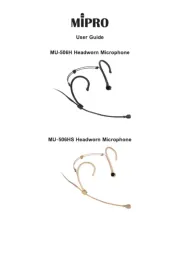
29 Juli 2025
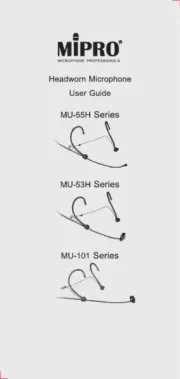
29 Juli 2025
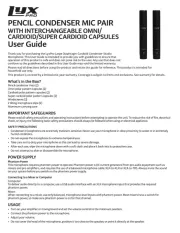
29 Juli 2025

29 Juli 2025
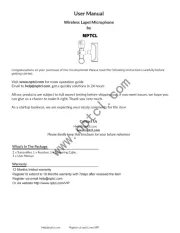
28 Juli 2025
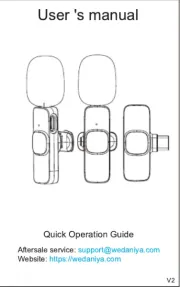
28 Juli 2025
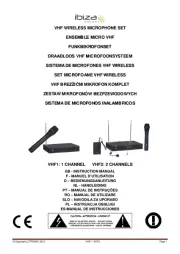
28 Juli 2025
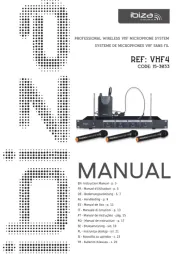
28 Juli 2025
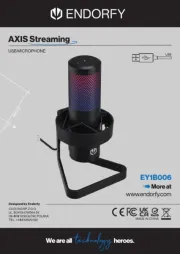
23 Juli 2025
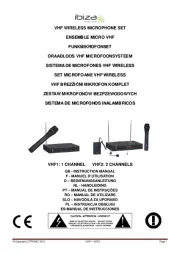
22 Juli 2025